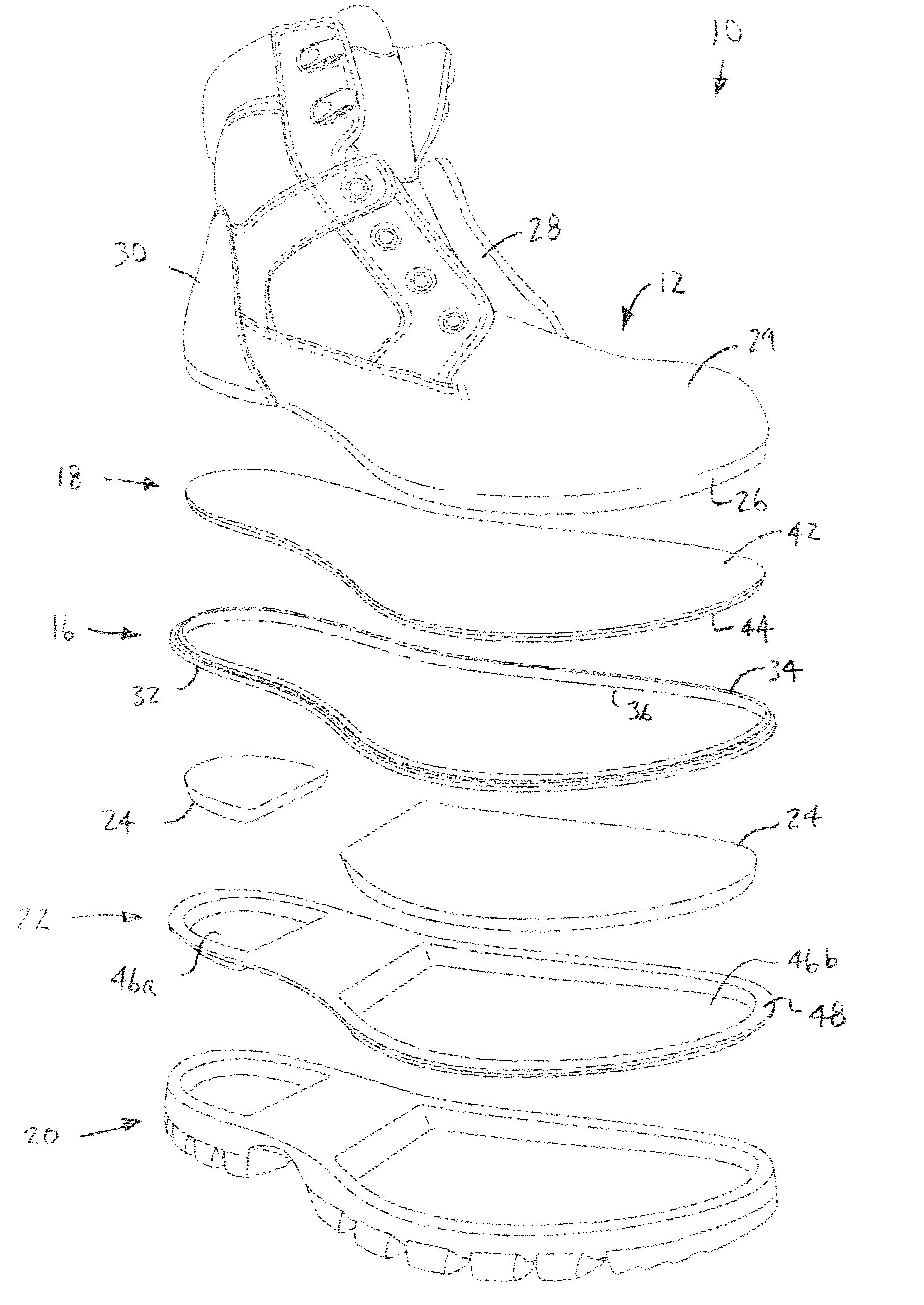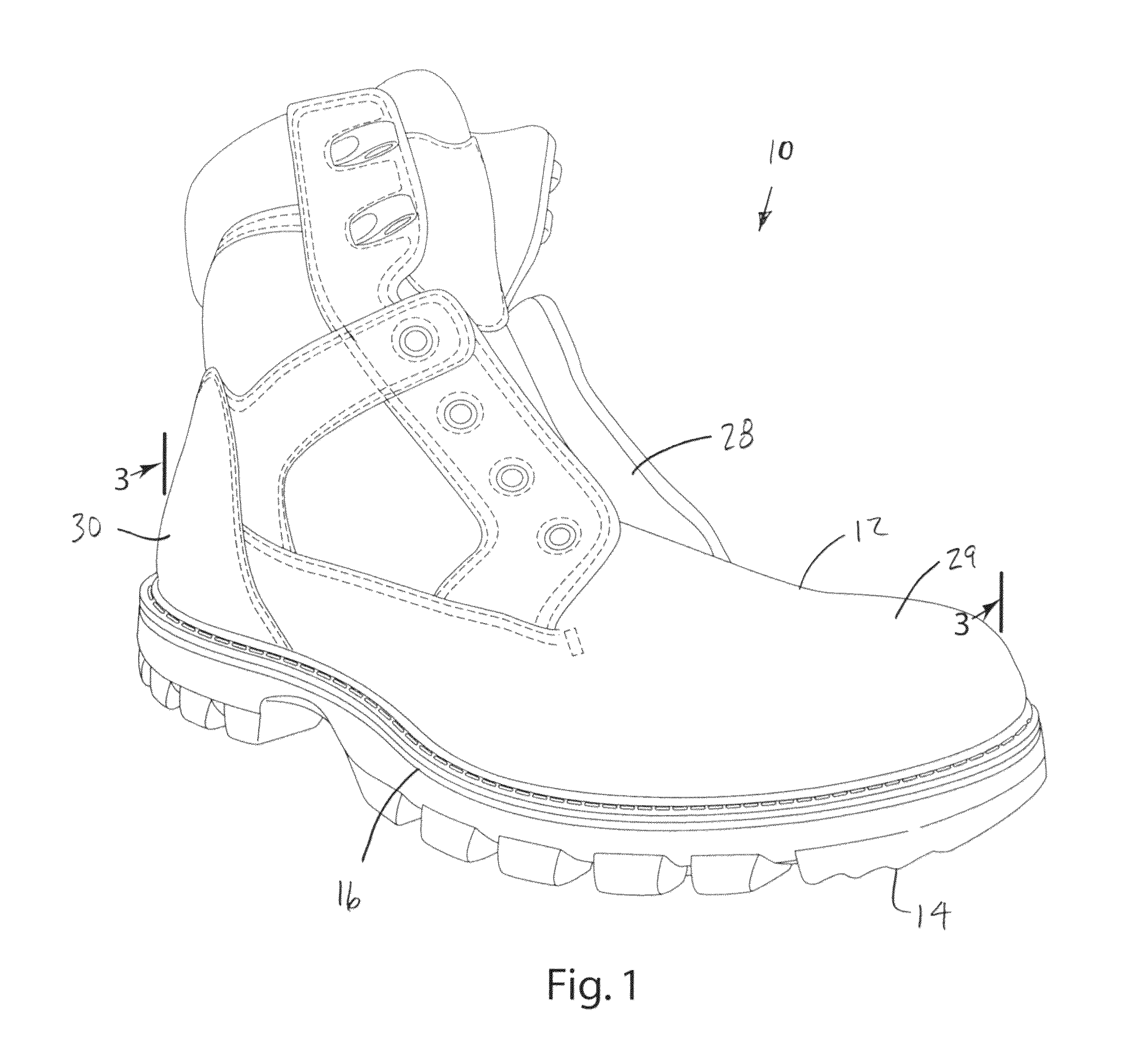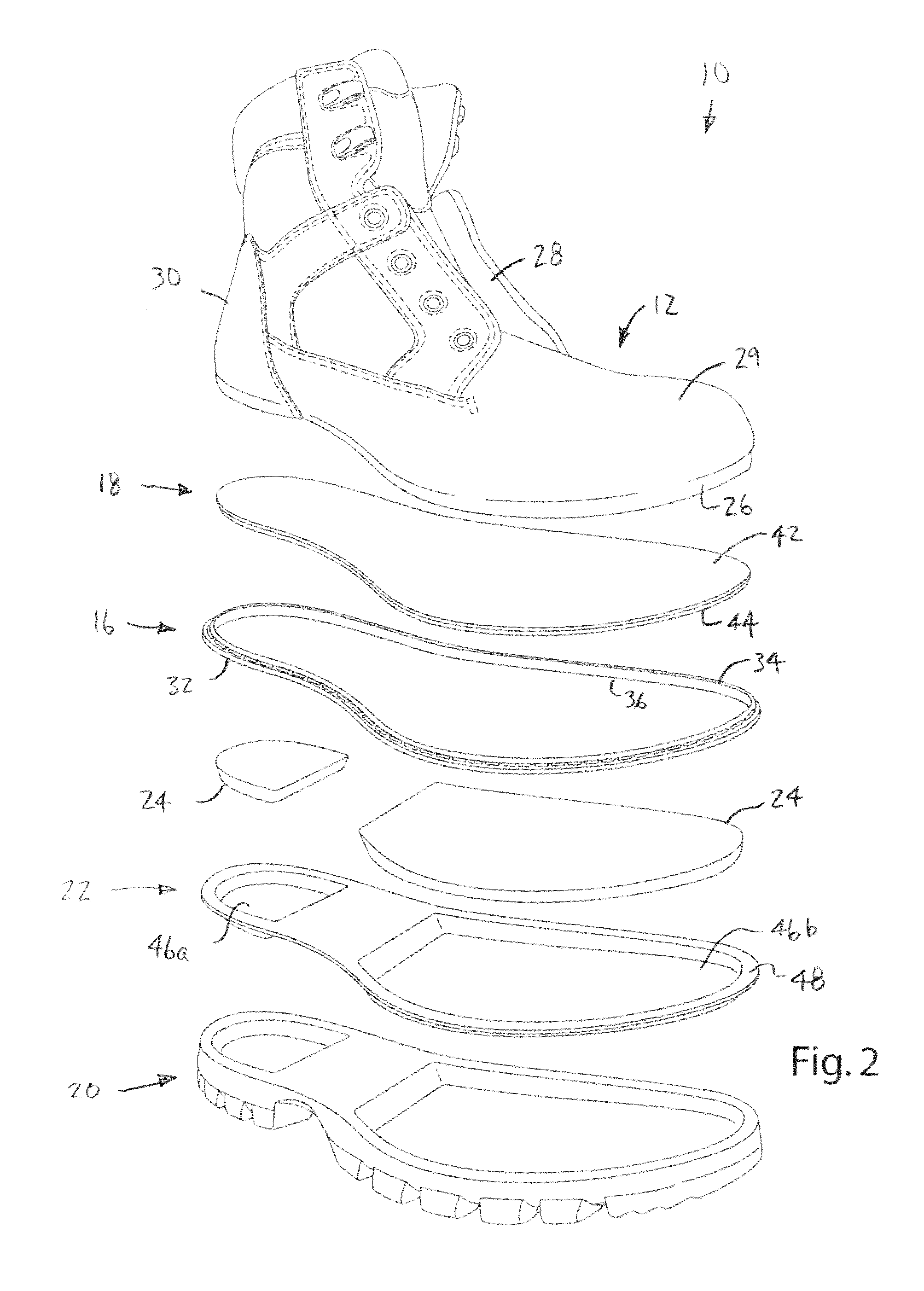Footwear construction
a construction and footwear technology, applied in the field of footwear, can solve the problems of increased weight, increased wear resistance, and increased wear resistance of footwear, and achieve the effects of reducing weight, cracking and separation, and reducing the thickness of high-density outsole materials
- Summary
- Abstract
- Description
- Claims
- Application Information
AI Technical Summary
Benefits of technology
Problems solved by technology
Method used
Image
Examples
Embodiment Construction
[0019]A boot constructed in accordance with a preferred embodiment of the present invention in shown in FIGS. 1 and 2, and generally designated 10. In general, the boot 10 includes an upper 12 that is secured to the sole 14 by a welt 16. As perhaps best shown in FIG. 3, the sole 14 includes an insole 18, a tray 22 and an outsole 20. The tray 22 of this embodiment defines separate heel and forefoot cavities 46a-b that contain filling material 24, such as low density polyurethane. The illustrated welt 16 is attached to and interconnects the upper 12, the insole 18 and the tray 22. In this embodiment, the outsole 20 is direct-attached to the undersurface of the tray 22, and is manufactured from high-density polyurethane.
[0020]For purposes of disclosure, the present invention is described in connection with a conventional ¾ height boot. The present invention is, however, well suited for use with essentially all other types of soled footwear that can accommodate a welt construction. For ...
PUM
 Login to View More
Login to View More Abstract
Description
Claims
Application Information
 Login to View More
Login to View More - R&D
- Intellectual Property
- Life Sciences
- Materials
- Tech Scout
- Unparalleled Data Quality
- Higher Quality Content
- 60% Fewer Hallucinations
Browse by: Latest US Patents, China's latest patents, Technical Efficacy Thesaurus, Application Domain, Technology Topic, Popular Technical Reports.
© 2025 PatSnap. All rights reserved.Legal|Privacy policy|Modern Slavery Act Transparency Statement|Sitemap|About US| Contact US: help@patsnap.com



